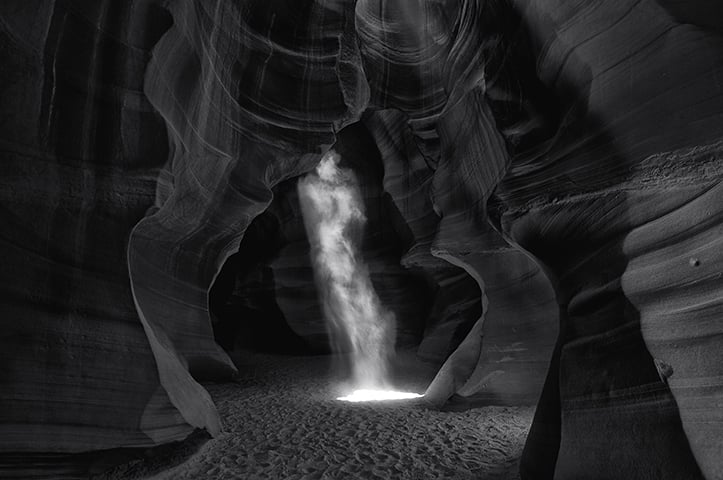
Peter Lik may claim to have sold the world’s most expensive photo, with the $6.5 million Phantom (see $6.5 Million Landscape Is World’s Most Expensive Photo), but the artist is artificially inflating his market. (This has sparked considerable debate on social media—see What Are People Saying About Peter Lik’s Photo Sales Scheme?)
The photographer, who deals his own work through the 15 galleries he owns (and also dabbles in real estate—see Photographer Peter Lik Lists Maui Home for $19.8 Million, More Than Twice What He Paid), is hardly a household name, but Lik has quietly managed to turn himself into the Thomas Kinkade of photography, selling pretty, pleasing, banal images that are wildly popular with a certain class of inexperienced collectors, but are barely recognized by the art establishment. The artist’s chief financial officer claims that over 100,000 Lik photographs have been sold for more than $440 million, which would make him the most financially successful fine art photographer of all time.
The New York Times, however, has called these figures into question, citing data from the artnet Price Database. At auction, Lik has never sold for more than $15,860—a price that was achieved for Ghost, a color version of Phantom, at a 2008 sale. That is his only sale thus far that has brought in more than $3,000. So where are all these big sales numbers coming from?
An Australian native, Lik sells his work in tourist-heavy places like Maui and Las Vegas, where travelers are often happy to pick up a handsome, large-scale landscape print that will let them bring home the spirit of their vacation. His buyers generally don’t have an art education, but they do have disposable income, and see Lik’s nonthreatening work as providing easily accessible entrée into the booming art market.
With photos sold in limited editions of 995, Lik is able to create artificial demand by driving up the prices as he sells more copies. Initially offered at $4,000, a photo’s sticker-cost rises steadily as the supply shrinks. An image that is 95 percent sold-out becomes “Premium Peter Lik” for $17,500, and the price only further skyrockets as those final pictures find buyers. This perceived scarcity provides a big incentive to buy today, before the price goes up.
Art consultant David Hulme, who in 2012 warned against collecting Lik “because Peter Lik’s photographs have no secondary market presence or value,” routinely fields calls from Lik owners who are hoping for a profitable resale. He told the Times that he worries that the galleries’ tiered pricing structure is “misleading” customers, understandably causing them to assume that the outside market will reflect the ever-rising prices charged by the artist.
For the record-setting Phantom, Lik employed a new tactic, putting the word out to his most prolific collectors that his latest work would be one-of-a-kind. The $6.5 million sale was widely reported, but the backlash was swift, both against the photo’s artistic value and the validity of the astronomical price tag (see Is That $6.5 Million Photo Sale for Real? Probably Not!). As the Times points out, the sale was both private and anonymous, so “it’s hard to know what’s ‘official’ about it.”
Perhaps the biggest believer in the Peter Lik myth is the photographer himself. “I’m the world’s most famous photographer, most sought-after photographer, most awarded photographer,” he told the Times. While he can’t deny artnet’s figures and his non-existent resale market, Lik does have an excuse. “It’s like a Mercedes-Benz,” he said. “You drive it off the lot, it loses half its value.”